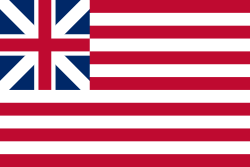| Fourth North Carolina Provincial Congress | |||||
|---|---|---|---|---|---|
| |||||
 | |||||
| Overview | |||||
| Legislative body | North Carolina Provincial Congress | ||||
| Jurisdiction | North Carolina ( de facto ) | ||||
| Meeting place | Halifax Court House | ||||
| Term | April 4, 1776 – May 14, 1776 | ||||
| Provincial Congress | |||||
| Members | 153 delegates | ||||
| President | Samuel Johnston | ||||
| Vice President | Cornelius Harnett | ||||
| Sovereign | |||||
| Monarch | HM George III | ||||
| Governor | HE Josiah Martin | ||||
The Fourth North Carolina Provincial Congress was a meeting of the provincial congress of the de facto provincial government of North Carolina, composed of 153 delegates from 35 counties and nine towns. The congress convened in Halifax on April 4, 1776, and ended on May 14, 1776, during the final year of Josiah Martin's gubernatorial administration. Samuel Johnston was unanimously chosen as president, and Cornelius Harnett was appointed as vice president of the congress. [1] [2]















